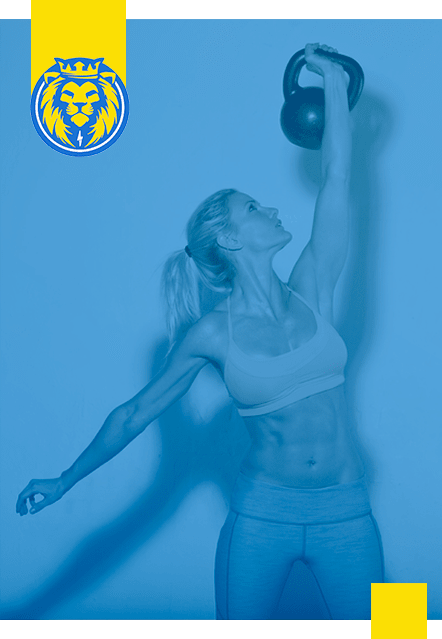
In today’s world of high-tech solutions and complex biohacking trends, one of the most powerful ways to support your health might be the simplest: standing barefoot on the ground. Grounding, also known as "earthing," is the practice of physically connecting your body to the Earth’s surface. Whether it’s walking barefoot on grass, standing in sand, or using a grounded mat indoors, grounding is gaining attention for its potential to reduce pain, improve sleep, lower inflammation, and restore balance to the body’s natural systems. While the idea might sound a bit unconventional at first, the science and anecdotal evidence behind it are both growing and compelling. In this article, we’ll explore: What grounding is and how it works The science behind why it may reduce pain and inflammation Its impact on sleep, stress, and heart rate variability How to try grounding at home And whether it could help with chronic back pain, joint discomfort, or inflammation Grounding is the practice of making direct skin contact with the Earth’s surface—grass, soil, sand, or even natural bodies of water. This can be done simply by walking barefoot outdoors, lying on the ground, or using specially designed indoor devices like grounding mats or sheets. The Earth carries a mild negative electrical charge. Our bodies, through daily exposure to electronics, processed food, stress, and environmental pollutants, often accumulate a positive charge. The theory is that grounding helps neutralize this imbalance by allowing electrons from the Earth to enter the body. It’s not just theory. Studies and testimonials suggest that grounding can influence biological processes at the cellular level, including reducing inflammation and improving blood flow. While the most natural way to ground is by standing barefoot on grass, soil, or sand, it’s not always practical—especially in hot climates, urban areas, or during colder seasons. Fortunately, there are multiple ways to incorporate grounding into your lifestyle, both outdoors and indoors. Spending 10–20 minutes barefoot on natural terrain like grass, sand, or dirt helps discharge built-up positive electrical charge and allows your body to absorb the Earth's natural electrons. This simple practice can be done during a morning walk, at the beach, or while gardening. Grounding sheets are specially designed bedding products woven with conductive materials (like silver threads) that connect to the ground port of a standard electrical outlet. When plugged into a properly grounded outlet, the sheet creates a connection between your body and the Earth while you sleep. This allows you to experience many of the same benefits of outdoor grounding—including reduced inflammation and improved sleep—without ever leaving your home. Grounding sheets are ideal for people who spend most of their time indoors, work long hours, or live in areas without safe access to natural grounding surfaces. Grounding mats are another indoor option, designed to be used under your feet while sitting at a desk or relaxing on the couch. Like grounding sheets, they plug into the ground port of an outlet to establish the connection. Some people even use grounding patches or wristbands for localized contact during the day. Lying or sitting directly on the Earth without a blanket or barrier can also produce grounding benefits. Bring a book outside, practice yoga, or simply relax in a shaded spot with bare skin contact to the ground for a few minutes each day. Sand and water are highly conductive environments, making the beach one of the most effective places to ground. Wading in the ocean or walking along the shore with bare feet allows a stronger and more immediate electrical connection to the Earth. At a cellular level, the human body functions through electrical signals. The heart beats, nerves fire, and muscles contract based on electrical impulses. Over time, due to insulation from rubber-soled shoes and exposure to electromagnetic fields (EMFs), our bodies become electrically imbalanced. Grounding restores that balance by allowing excess positive charge (or free radicals) to discharge into the Earth, similar to how static electricity is neutralized. Some of the proposed physiological benefits of grounding include: Studies have shown that grounding can reduce markers of inflammation. This is likely due to the free electrons from the Earth acting as antioxidants that neutralize free radicals in the body, molecules that damage cells and contribute to chronic pain and disease. After grounding, red blood cells often become less clumped and more spread out, improving circulation and allowing more oxygen delivery to tissues. This improved “blood viscosity” can have a big impact on energy, tissue repair, and overall performance. Many grounding users report deeper, more restful sleep. One reason is grounding’s effect on cortisol, the stress hormone. Research has shown that grounding during sleep can help normalize cortisol rhythms, leading to improved sleep and recovery, which is especially important for those with busy, high-stress lifestyles. HRV is a measure of how well the body manages stress and recovers from it. Higher HRV is associated with better sleep, improved focus, and a stronger parasympathetic nervous system response. Grounding has been linked with increases in HRV, which may translate into better overall resilience. As we age, our bodies accumulate wear and tear. Many people in their 40s, 50s, and 60s begin to experience: Chronic joint pain Poor sleep Increased stress Slower recovery from workouts Low energy Grounding offers a low-cost, low-effort strategy to support recovery and reduce stress on the body, which is especially helpful for those already dealing with inflammation or past injuries. It's not a miracle cure, but it can be a helpful tool in a larger health routine. The beauty of grounding is its simplicity. You don’t need fancy equipment to get started. The easiest way to ground is to spend 10–20 minutes walking barefoot on grass, dirt, or sand each day. Bonus points if you do this in the morning to soak up sunlight and reset your circadian rhythm. If you can’t easily access natural surfaces, grounding products like mats, sheets, or patches can simulate the same effect by plugging into a grounded outlet in your home. These are great for sleep or for placing under your desk while you work. Spend time outside sitting on the grass, doing yoga, reading, or just relaxing. The longer the skin is in contact with the Earth, the better the potential benefits. Like any wellness practice, the benefits of grounding build over time. Try it daily for a few weeks and see how your sleep, energy, or joint stiffness responds. Yes, grounding is generally safe and natural. It doesn’t require supplements, medication, or major lifestyle changes. Just pay attention to your environment—avoid grounding during thunderstorms and make sure grounding products are plugged into properly grounded outlets. For indoor grounding tools, choose reputable brands and avoid DIY electrical work unless you know what you’re doing. While some grounding mats plug directly into outlets, others are even connected to outdoor grounding rods for purer electrical contact. In a world full of high-tech solutions and complicated fitness plans, sometimes the most effective wellness strategies are the ones that reconnect us to nature. Grounding is simple, free, and backed by science. If you’re dealing with chronic inflammation, joint pain, or stress, grounding could be a small but powerful addition to your routine. Whether you take a barefoot walk each morning or invest in a grounding sheet for better sleep, you may be surprised at the impact of this small change. At Legacy Personal Training, we support holistic strategies like grounding as part of a complete wellness approach for our clients. Because when your body feels better, you can train harder, recover faster, and live a stronger, longer life. Legacy Personal Training proudly serves the DC Ranch and North Scottsdale community. If you’re looking for personalized fitness coaching that integrates smart training and long-term recovery strategies, schedule your consultation today. Ready to take your health back to the basics and feel better than ever? Let’s get grounded.How Grounding Can Help Reduce Pain, Inflammation, and Stress
What Is Grounding or Earthing?
Ways to Ground (Even Indoors)
1. Go Barefoot on Natural Surfaces
2. Use a Grounding Sheet
3. Try Grounding Mats or Pads
4. Lay or Sit on Natural Ground
5. Visit the Beach or a Natural Body of Water
Why Grounding Might Work: The Science Behind It
Reduced Inflammation
Improved Blood Flow and Oxygenation
Better Sleep and Recovery
Enhanced Heart Rate Variability (HRV)
Why Grounding Matters Even More After 40
How to Get Started with Grounding
1. Walk Barefoot Outdoors
2. Use a Grounding Mat or Sheet
3. Sit or Stretch on the Ground
4. Be Consistent
Is Grounding Safe?
Final Thoughts: Reconnect with What Matters

